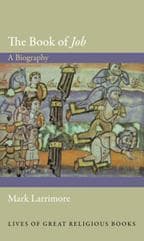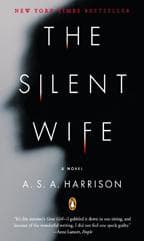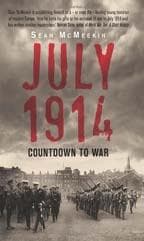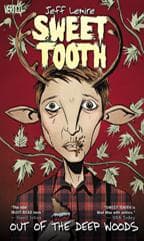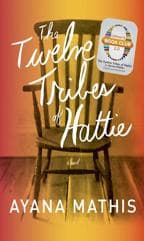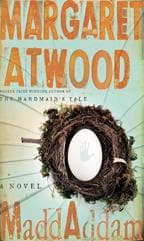Advertisement
On Point Staff's Favorite Books Of 2013
This past year was a big one in books, and the On Point staff was lucky enough to read a good number of the year's literary offerings. Beyond the daily hustle and bustle of our program, here's a list of On Point's favorite books of 2013. Hope you find a great read to tide you over through the holiday season, or find something big and deep to start off your 2014 with a literary bent.
-- The On Point Staff
Click the titles below to jump to the mini-review
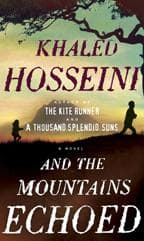
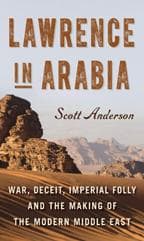
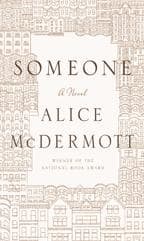
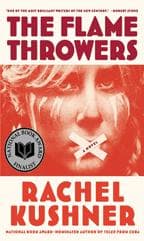
The Book Of Job: A Biography" by Mark Larrimore
With all the wondrous books I read for On Point in a year, it's hardly fair to ask for one best volume. Really tough. But then, what is
tough compared to the trials of the Bible's long-suffering Job? God himself tag teams with Satan in the ancient story to make Job's life a
hellish misery. His misfortunes are random, many and dire. Ever since the tale was told, writers and painters and poets and thinkers
have tried to make sense of it. Scholar Mark Larrimore tells that tale - of the rolling interpretations - with such verve in "The Book
of Job: A Biography." It's a theology course, a philosophy course, a cultural history course and a very relevant meditation on life's
trials all rolled into one. Incredible rate of ideas per inch. My fave. Others that come to mind as extra good: "Darling" by essayist
Richard Rodriguez and "Amsterdam: A History of the World's Most Liberal City" by Russell Shorto, for a tour de force illumination of
theemergence of old school liberalism. -- Tom Ashbrook
"The Silent Wife" by A S .A. Harrison
My best read of 2013 is "The Silent Wife," a novel by A.S. A. Harrison. Jodi is a tightly wound psychologist. Her longtime partner Todd is a builder with a soaring libido, with a 20-something girlfriend who happens to be the daughter of his best friend. It’s clear from the beginning that Jodi and Todd’s world is about to crack wide- open. This isn’t the kind of storyline that usually sucks me in. But this one did, and I couldn’t put it down. The book begins with a look at the perfect couple. They live in a swanky condo, make cocktails before dinner, and take turns walking the dog. Looks, as they always say, are deceiving. He drinks too much. She obsesses about her weight. Both are terrified of commitment and have never married. They keep secrets from each other. Harrison exposes those secrets with the caring skills of a psychologist. Slowly, page by page, she goes deep into their psyches: Jodi’s unloving parents; Todd’s bumpy childhood. What emerges is a portrait of a couple that was psychologically destined to come together, and ultimately fail. My own feelings about Jodi and Todd changed throughout the book. I found myself empathizing with Todd’s limitations and wishing Jodi could have picked a healthier partner. I judged them both harshly, then gently. Every page was an emotional page-turner. Nothing could have prepared me for the shocking ending. In the months since I’ve read the book, I’ve gone over it many times in my mind. I found myself thinking about Jodi and Todd, and a lot about human nature: What are we capable of when pushed to the limit? A.S.A. Harrison shows us that the answer is: everything. A.S.A. Harrison died must months before the book was published. "The Silent Wife" was her debut novel. She was 65 years old. -- Karen Shiffman
"July 1914: Countdown to War" by Sean McMeekin
When I saw July 1914: Countdown to War by Sean McMeekin in a book store, my heart sank. The “July Crisis” that followed the assassination of the Austrian Archduke, Franz Ferdinand, in Sarajevo and that ended in war is the most ploughed over episode in diplomatic history. Although by no means a scholar, I had read "The World Crisis, Volume I, 1911-1914" by Winston Churchill, the two –volume history by Sidney Fay published in the 1920s, the documentary history edited by Immanuel Geiss published in the 1960s, and the three-volume opus by Luigi Albertini published in English in the 1950’s. Of more recent works, the diplomatic dance of death in Vienna, St. Petersburg, Berlin, Paris, and London occupies much of Hugh Strachan’s massive "The First World War Volume I: To Arms (2001)", the first third of David Stevenson’s "Cataclysm: The First World War as Political Tragedy (2005)," and nearly all of "Decisions for War, 1914-1917 (2003)," edited by Richard H. Hamilton and Holger H. Herwig. How, I wondered in the bookstore, could there be anything new to say about the July Crisis? And how could Sean McMeekin, called the “leading young historian of modern Europe” by Norman Stone, how could the author of original works like The Russian Origins of the First World War and The Berlin-Baghdad Express--what was this imaginative, multilingual scholar doing spending his time on this stale subject? It took only a few pages of "July 1914" to buoy my heart. McMeekin makes this old story new. His history reads like a novel. Better, it unfolds like a play. There is no “going behind,” as Henry James termed authorial interventions in a novel’s forward flow. There is no going ahead, either. Events happen in the text as they did in life. The historical actors don’t know the consequences of their acts; neither does the reader. The footfalls of the future echo only in the foreshadowings that end chapters: “As they awoke Monday, Bethmann and Jagow would have some quick thinking to do. News was flooding in from Belgrade, Vienna, Petersburg, Paris, and London. Almost none of it was what anyone in Berlin wanted to hear.” McMeekin adds dollops of fresh savory fact on every page. More importantly, he sees the whole crisis unclouded by bias for or against his characters or their countries. He saves moral judgment for the end. “When we examine the key moral question of 1914--responsibility for the outbreak of European, then world war—it is important to keep degrees of responsibility in mind. Sins of omission are lesser ones than sins of commission: likewise, actions are not equivalent to the reactions they occasion.” That last observation is characteristic of McMeekin’s subtle turn of mind. He applies it exquisitely in assessing blame for the war. Serbia, the source of the plot to kill the Archduke, stands first “in the dock of judgment.” Next Austria-Hungary, for its reckless escalation of the crisis. Next Germany, for giving Austria the notorious “blank check” to attack Serbia. Closely behind is Serbia’s protector, Russia: “The decision for European war was made by Russia on the night of 29 July 1914, when Tsar Nicholas II, advised unanimously by his advisers, signed the order of general mobilization. General mobilization…meant war.” Next France, for goading Russia on, and for…well, enough. "July 1914" is superb history and compelling reading. -- Jack Beatty
*Full disclosure: McMeekin praises my 2012 book, "The Lost History of 1914."
"Sweet Tooth" By Jeff Lemire
I’m going to cheat a bit with my pick for best book of the year, in that it’s actually a comic book series that ran from 2009 until 2013 – but that means the final collected edition came out this year. So it’s the first year you can go to your local library/bookstore and read the whole run. Anyway, I nominate “Sweet Tooth,” by Jeff Lemire, published by Vertigo. Most basically, it’s a story about a boy with antlers trying to survive in a post-apocalyptic America – after a mysterious plague has wiped out the majority of the population. The quote I’ve seen frequently used to describe the series – though oddly never attributed to any particular person – is “Mad Max meets Bambi.” I’ll buy that, but I’d call it even more like the work of Cormac McCarthy (of “The Road,” “Blood Meridian,” and a lot more), both in setting, and its portrayal on the kind of savagery that crisis can bring out in people. In a way though, “Sweet Tooth” presents a response to the kind of rock-hewn hyper-masculine heroes that Cormac McCarthy tends to produce. There’s a focus on the importance of empathy and community as well – not to mention that “Sweet Tooth” also includes female characters , unlike a lot of the McCarthy canon. Jeff Lemire both wrote and illustrated “Sweet Tooth,” with some help from guest artists like Nate Powell (the terrific graphic novelist who worked with Congressman John Lewis on “March”). The art style is sketchy without sacrificing detail – genuinely beautiful, with influences from sources as varied as zombie movies and Inuit mythology. My one criticism of Sweet Tooth is simple: it’s too short, and wraps up too quickly at the end. But that’s no real reason not to enjoy the ride. (And in the world of comics, there’s always an opening for more to come down the road.) -- Sam Gale Rosen
"The Twelve Tribes Of Hattie" by Ayana Mathis
Ayana Mathis debut novel, "The Twelve Tribes of Hattie," follows the incredible story of Hattie Shepherd and her family surviving in the rocky 20th century. Each chapter is centered on one of Hattie's descendants (eleven children and one grandchild,) and shows the struggling, steadfast matriarch through their eyes. At her youngest - Hattie is a 15 year old girl - fleeing the stifling segregation of 1920's Georgia - young, strong, full of hope and determined to find something better for herself in the North. As the book develops we hopscotch back and forth through time, watching as Hattie's marriage and expanding family ware her away. It's not a new story - it's no suprise it's hard being a mother of eleven, a woman with a no-good, deadbeat husband, or a young black girl escaping her southern roots - but what makes this novel worth your time is Mathis' writing. Hattie comes through so clearly - you can feel the pain, the hatred, the love, and the faith her family feels toward her. Your heart is tugged along as Hattie perseveres through disappointment, loss, and the trials of life - and emerges at the other end - still standing. — Emily Alfin Johnson
"MaddAddam" by Margaret Atwood
Ten years ago, when Margaret Atwood first penned her prize-winning novel "Oryx and Crake," I doubt she thought that, from there, she’d build a trilogy. For starters, in that first novel, she ended the world. But the brilliant woman who built her name on deep and dark works of speculative (science, if you must) fiction like "The Handmaid’s Tale" and "The Blind Assassin" has a gift for exploring and re-exploring the inner conflicts of our human cultures and experiences.MaddAddam – the finale of her series – embodies that gift. While "Oryx and Crake" told the “last man on Earth” story and "Year of The Flood" – her second – explored the best and worst of hippiedom and religion, "MaddAddam" acts as an origin story. The Earth, redux. After a world overrun with unfettered violence, child porn, corporate greed, and climate chaos ends, another world begins with new, bio-perfected people. Humanoids designed to feel no sexual jealousy; to eat nothing but leaves. "MaddAddam" is the story of them and the birth of their beliefs. It is the story of a people who understand only goodness, coming to grips with evil, still lingering from old world indulgences. Atwood has a magnificent handle of the technologies of our very real world – and she plays out their potentials for the most positive and negative results. It is, ultimately, a sad story. Filled with love and loss; science and warning. And it is one worth reading.* -- Dean Russell
*[Conflict of Interest Disclosure: Yes, it’s true. Margaret Atwood did reportedly refer to me as “cute” when she visited WBUR. And yes, this probably did skew my voting for Best Book of 2013. Deal with it.]
"And The Mountains Echoed" by Khaled Husseni
I was stuck on a long bus ride in France with my two young children, without any kids’ books or toys. They were getting bored, so out of desperation, I offered to read them a book I had in my bag, “And the Mountains Echoed” by Khaled Husseini. I had not read the “The Kite Runner,” and had little idea what “And the Mountains Echoed” was about. The book opens with a magical folk tale for children, about a boy captured by a div, an ogre-like creature. My son was riveted from the first page. It took about ten minutes of half-listening before my daughter too slid over. And together we read and read, until the folktale, and the bus ride, ended. That folk tale was just the beginning of a book that sweeps across continents and generations and kept me rapt until the very end. -- Julie Diop
"Lawrence in Arabia: War, Deceit, Imperial Folly and the Making of the Modern Middle East" by Scott Anderson
Ask any journalist or historian: The art of telling a story about the real world is inherently flawed. The writer has to give it a narrative thread, a pace, and in the process, has to pare away a lot of the details that are, in the real world, an inseparable part of the story. (I like to say that a story is like a water glass you hold in your hand –whereas reality is that glass smashed on the ground…all shards you can never put together perfectly, complex, confusing.) And that is why I enjoyed Scott Anderson’s account of T.E. Lawrence’s time in Arabia. Lawrence’s story is the story of World War I as it played out in the Middle East. Anderson folds in several other characters (mostly overlooked by history) who crossed paths and bureaucratic swords with Lawrence and served other nations: a German diplomat and spy, an American oilman and spy, a Romanian-born agronomist who was an ardent Zionist and, yes, a spy. Anderson gives the reader a great gift: the tools to understand for him/herself how it must have been. He manages to pull the story apart into a thousand pieces and still keep you turning the pages. In the process, he gives you a great deal more insight into the stories you thought you knew. It’s not that his story shatters the accepted narratives, it’s that he undergirds them with much, much more nuance. The reader will recognize human nature (as plain and familiar as workplace intrigues and everyday snafus) as a key component of the chaotic events of the days that built the tangled Middle East we see today. -- Stef Kotsonis
“Someone” by Alice McDermott
When I was 21 years old and a junior in college my favorite professor, author Alice McDermott, said most fiction is about “how we get through life.” Her new novel and her first in seven years, “Someone,” is about how an unremarkable woman gets through the joys and disillusionments of everyday life. McDermott’s distilled, lyrical prose returns again to working class, Irish-Catholic Brooklyn, where she uses the ordinary life of Marie to make thoughtful observations—smart, funny and brutally honest—about religion, family, and the changing face of New York City. Much of “Someone” is about the imperfect love of family, how we can fail them and they can fail us, but how family still remains the strongest current in one’s life. She writes, “slipping out of that first darkness, into the dusty, city light of these rooms, I met the blurred faces of the parents I’d been given—given through no merit of my own—faces that even to my defective eyes, ill-formed, you might say, in the hours of that first darkness, were astonished by love.” One of the most beautiful vignettes, about Marie’s first love and sequential heartbreak, is so universal in its clarity, youthful hope, and melodramatic despair, it reads like a horoscope. McDermott’s genius is that she is able to synthesize small, quiets moments into thoughtful, big statements on the way we all live. “Someone” isn’t marketed as a book about New York, but in its subtle, detailed observations of Brooklyn, spanning much of the 20th century, she writes a more nuanced, more elegant portrait of the city than another “New York” author with a book out this year, Jonathan Lethem. What I love about Alice McDermott’s writing was described well by the Washington Post’s review of her last novel, “After This”: “there is no excess, no look-at-me pyrotechnics in her prose.” Alice McDermott writes how I think many of us want to live, with beauty, intelligence, grace, and humility and that is why “Someone” is my favorite book of the year. -- Kat Brewer
"The Flamethrowers" by Rachel Kushner
It feels a little like cheating to put "The Flamethrowers" on a list of the best books of 2013, since nearly every other list I've seen this month includes it among the finer titles of the year. But it also makes sense, because Rachel Kushner's tense, tightly-wound novel is truly a remarkable piece of fiction. It follows the story of Reno (if that's even her real name), an unlikely "land artist" who gets caught up in the heady world of the New York City art scene in the 1970s. She falls in love — kind of — with the wealthy son of an Italian manufacturing titan, and then everything falls to pieces. So much of the story is left intentionally vague, as if the entire period were covered in a thick and obfuscating smoke that blocks out the normal clarity of the everyday. "The Flamethrowers" is the kind of deeply researched, elegantly crafted historical fiction that pulls you in and makes you eager to learn more about the real-life people who inspired the fantasies described therein. Curious about modern art? Like fast cars? Find 20th century American and European political protest movements interesting? This is the book for you. It's also full of absolutely beautiful, knock-out sentences — "A quadrangle of plain, cloudless sky. A forced contemplation of the heavens, crisp and angelic blue, a classic prelude to death. If there had been just one puffy trawler, a little tugboat of a cloud, even so much as a cotton ball of vapor against the blue, he would have hoped. There was only blue." -- that could light anybody up. -- Nick Andersen
